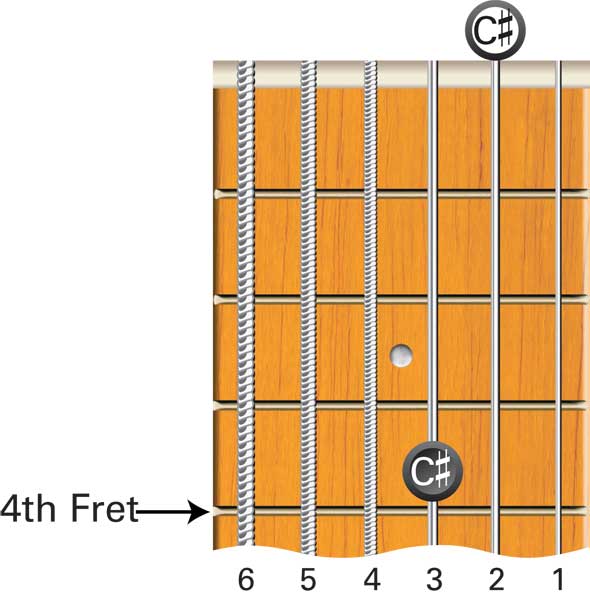
Tuning the Guitar to Itself

Open A tuning requires the fourth, third and second strings to be raised one tone from standard tuning. This can be done in three steps. The following steps assume the guitar is already tuned in standard tuning.
Step One
Option 1:
Play the note at the 7th fret, fifth string (an E note). Play the open fourth string (a D note). Turn the fourth string tuning key slowly in an anti-clockwise direction, raising the pitch of this string until the open string note is the same pitch as the 7th fret, fifth string. The open fourth string will now be an E note.
Option 2:
Play the note at the 12th fret, sixth string (an E note). Play the open fourth string (a D note). Turn the fourth string tuning key slowly in an anti-clockwise direction, raising the pitch of this string until the open string note is the same pitch as the 12th fret, sixth string. The open fourth string will now be an E note.

Step Two
Option 1:
Play the note at the 5th fret, fourth string (now an A note). Play the open third string (a G note). Turn the third string tuning key slowly in an anti-clockwise direction, raising the pitch of this string until the open string note is the same pitch as the 5th fret, fourth string. The open third string will now be an A note.
Option 2:
Play the note at the 12th fret, fifth string (an A note). Play the open third string (a G note). Turn the third string tuning key slowly in an anti-clockwise direction, raising the pitch of this string until the open string note is the same pitch as the 12th fret, fifth string. The open third string will now be an A note.

Step Three
Play the note at the 4th fret, third string (now a C# note). Play the open third string (a B note). Turn the second string tuning key slowly in an anticlockwise direction, raising the pitch of this string until the open string note is the same pitch as the 4th fret, third string. The open second string will now be a C# note.